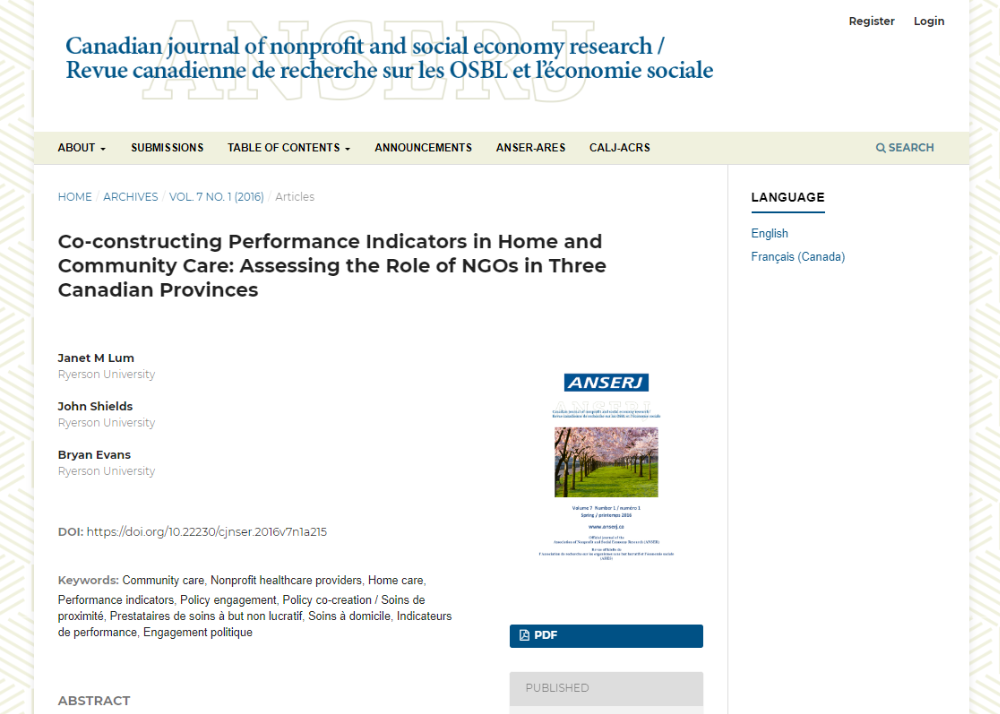Co-constructing Performance Indicators in Home and Community Care Assessing the Role of Nongovernmental Organizations in Three Canadian Provinces
The objectives of this study are to identify what performance indicators make sense for home and community care and who has input in deciding these indicators? Findings suggest that state actors do recognize the calls from the home and community care NGOs to develop appropriate performance indicators for this sector, and to incorporate quality of life as an essential component of performance measurements.
Author: Janet M. Lum, John Shields, Bryan Evans
Publication Date: June 13, 2016
Description: This article examines the extent to which public servants interact with non-governmental organizations (NGOs) to co-construct performance indicators in the home- and community-care sector. It uses 32 intensive qualitative interviews with NGO representatives and public servants in three Canadian provinces (British Columbia, Saskatchewan, and Ontario) with distinctive home- and community-care systems to uncover the lived experiences of NGO/government interactions around this issue and seeks to gain a greater understanding of the role of NGOs in shaping permanence indicators. Varying funding and delivery models of home and community care across provinces put NGOs in different roles in the delivery of home and community supports, and hence, set different contexts for NGO/public servant interactions across the three provinces.
Access: Free
Keywords: Community care, Nonprofit healthcare providers, Home care, Performance indicators, Policy engagement, Policy co-creation



